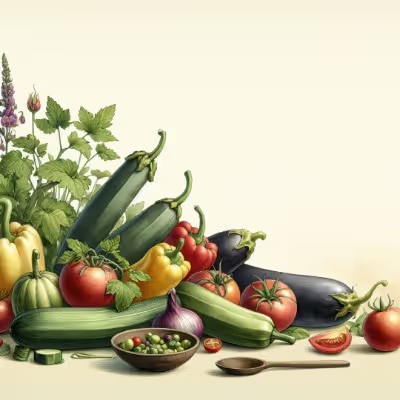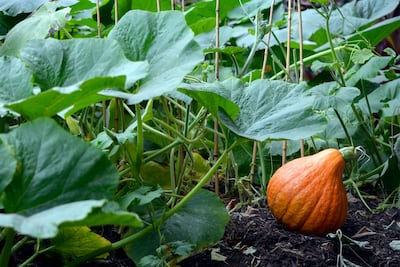What to Plant in April for a Healthy, Beautiful Spring Garden

What to plant in April
What to plant in April depends on soil warmth and last frost dates—spinach, radishes and peas thrive in cooler conditions right now. Sow carrots directly outdoors mid-month as soil heats above 45°F. Start tomatoes indoors to ensure sturdy seedlings, ready to transplant once frost danger passes. April rewards gardeners who prep smartly—prepare your beds, sharpen tools, and dig in.
Cheatsheet: April Planting Guide for Vibrant Gardens
🌱 Veggies to Sow
- Direct sow: carrots, beets, radishes, spinach, lettuce, peas
- Transplant: broccoli, cabbage, kale, onions
- Soil 50–65°F (10–18°C)
- Boosts nutrition & self-sufficiency
🌸 Flowers to Plant
- Annuals: cosmos, marigold, zinnia, nasturtium
- Perennials: echinacea, coreopsis, yarrow
- Bulbs: gladiolus, lilies, dahlias
- Encourage pollinators
🌿 Herbs to Start
- Direct sow: cilantro, dill, chives, parsley
- Transplant: basil, thyme, oregano
- Fresh flavor, supports wellness
🌳 Shrubs & Trees
- Plant berry bushes: blueberries, raspberries
- Set fruit trees: apple, plum, cherry
- Early planting = stronger roots
🛠️ Tools and Products You'll Need
- Hand trowel, spade, fork
- Compost or organic fertilizer
- Mulch for moisture control
- Gloves, watering can, plant labels
- Row covers (protect young plants from frost)
📋 April Planting Steps
- Test soil; amend with compost if pH < 6 or > 7.5
- Schedule sowing on a mild, dry day
- Follow seed depth and spacing on packets
- Transplant seedlings after last frost (32°F/0°C)
- Water deeply; mulch to retain moisture
- Label rows and monitor for pests weekly
🌞 Quick Stats
- Up to 4x more yield with April sowing vs. May
- Flower-rich gardens attract 3x more pollinators
- Homegrown greens: 50% more vitamin C than store-bought
I start by checking soil temperature and my last frost date, because April can flip from t-shirt to sleet faster than you can say arugula. A ten dollar soil thermometer tells me more truth than any app.
I target 40 to 45 F soil temperature for peas, spinach, carrots, and radishes, and I wait for 50 to 55 F for beets and chard. Beans, squash, and cucumbers sulk until 60 to 65 F.
Soil temperature drives germination more than air temperature. Source: University of Minnesota Extension seed-starting guidance.
For frost, I use my local 10 to 50 percent probability dates from NOAA normals and play the odds with covers. A layer of floating row cover buys me 2 to 4 F of insurance, which often makes the difference.
I sow cool-season crops on gray days with steady moisture, because they root cleaner and I get fewer crusted seedbeds. If the soil sticks to my shovel like brownie batter, I wait.
- Peas: direct sow at 1 inch deep, 2 inches apart, in 6 inch rows, when soil hits 40 F or 4 C. I trellis early with mesh to keep vines off wet soil.
- Spinach: 0.5 inch deep, 2 inches apart, thin to 4 inches or 10 cm, germinates at 40 F or 4 C. A light pre-sprout in the fridge shaves days.
- Carrots: 0.25 inch deep, steady moisture, germinates best at 55 to 70 F or 13 to 21 C. I cover the row with a board for 3 days to hold moisture, then remove.
- Radishes: 0.5 inch deep, 1 inch apart, harvest in 25 to 35 days at 55 F or 13 C. I interplant radish with carrots to mark the row.
- Beets and chard: 0.5 to 1 inch deep, clusters thinned to 4 inches, wait for soil 50 F or 10 C. A brief soak speeds uneven beet seed clusters.
- Lettuce and salad mixes: scatter sow, then thin hard. I switch to heat tolerant types by late April in zones 7 to 10.
- Onions and shallots: sets or seedlings go in as soon as you can work the ground. I plant 4 inches apart in rows 12 inches or 30 cm.
- Potatoes: seed pieces with 2 to 3 eyes, 4 inches deep, rows 30 inches or 75 cm. I hill early to beat April weeds.
- Asian greens and brassicas: mizuna, tatsoi, bok choy, arugula, kale. Flea beetles wake up in April, so I cover with fine mesh from day one.
In zones 7 to 10, I also tuck in early bush beans under cover once soil hits 60 F or 16 C. A spunbond cover keeps the first night chill off and speeds emergence.
I set out hardened-off broccoli, cabbage, cauliflower, kohlrabi, onions, parsley, and celery. I water them with a kelp and compost tea drench to settle roots.
Lettuce transplants go 10 to 12 inches apart, with shade cloth on hot afternoons. If frost threatens, I hoop and toss a cover before sundown.
In cooler zones, I start warm-season tomatoes, peppers, basil, squash, cucumbers, and melons indoors now for May plant out. I keep peppers at 75 to 85 F or 24 to 29 C to germinate, tomatoes at 70 to 80 F or 21 to 27 C.
I pot up tomatoes once the first true leaves show, then brush the tops daily to toughen stems. A small fan on low saves me leggy heartbreak.
I direct sow hardy annuals like calendula, larkspur, cornflower, poppy, nigella, and sweet alyssum once soil is workable. They shrug off a light frost and reward with long bloom.
Half-hardy annuals like zinnia and marigold get started in trays at 70 F or 21 C, then planted out after frost. I succession sow every two weeks for a longer show.
- Pansies and violas: set out now in most zones. They color up in cool weather and tolerate light frost.
- Dianthus and snapdragons: plant April in zones 5 to 8. Pinch once to branch and bloom heavier.
- Sunflowers: sow outdoors late April when soil reaches 55 to 60 F or 13 to 16 C. I mix heights for a layered hedge.
Perennials divide beautifully in April while growth is young. I split hosta, daylily, Shasta daisy, and echinacea with a sharp spade and replant at the same depth.
For bulbs and tubers, I plant dahlias after frost risk in zones 6 and colder, earlier under cloches. Gladiolus corms go in every two weeks for staggered bloom.
April is prime for bare-root fruit trees, roses, raspberries, and blueberries in cool soil that still hugs roots. I soak roots 30 minutes, prune broken tips, then plant with the flare at soil level.
Container shrubs like hydrangea, viburnum, and lilac establish fast in April. I water deeply, then mulch 2 inches or 5 cm, keeping mulch off the stems.
Parsley, cilantro, chives, dill, and thyme go in now. Cilantro bolts fast in heat, so I sow small patches every three weeks.
Basil waits for warm nights above 50 F or 10 C, unless it lives under a cloche. I prefer Genovese for pesto and Thai for punchy salads.
Cool-season lawns get overseeded when soil reaches 50 to 65 F or 10 to 18 C. I core aerate, topdress with 0.25 inch or 6 mm compost, then seed and roll.
In open beds, I sow buckwheat at the end of April in warm zones to feed pollinators and smother weeds. In cooler zones, I use oats and field peas as a quick April cover.
I use the USDA Plant Hardiness Zone Map to set expectations. The 2023 update shifted many locations warmer by a half zone, so double check your zone before you gamble on tomatoes.
- Zones 3 to 4: focus on peas, spinach, onions, potatoes, brassicas, hardy annuals. Start tomatoes and peppers indoors, and pot up slow growers.
- Zones 5 to 6: sow all cool-season crops, set out brassicas and onions, plant strawberries and raspberries. Start squash and cucumbers indoors late April.
- Zones 7 to 8: last frosts taper fast, so early beans under cover, corn by late April, and sweet potatoes in warm beds. Succession sow salads before heat arrives.
- Zones 9 to 10: switch to heat lovers now, with shading for lettuce and cilantro. Plant okra, eggplant, basil, and long beans as soil warms.
In the UK and similar climates, the RHS advises sowing hardy annuals outdoors in April and starting half-hardy types under cover. I follow that script and get reliable bloom even in fickle springs.
- Snap peas on netting, because the pods taste like sweet spring rain.
- Spring lettuce blends, a fast salad hedge that pays rent in three weeks.
- Early potatoes, chitted and eager, for buttery June plates.
- Spinach under mesh, which outpaces flea beetles every time.
- Calendula, a sunny workhorse that feeds pollinators and the compost heap.
- Broccoli transplants on a firm bed, spaced 18 inches or 45 cm for fat heads.
- Carrots in a shallow trench of sifted compost for straight roots.
- Strawberries mulched with clean straw to keep fruit off mud.
- Dill by the handful for eggs, fish, and self-sown volunteers.
- Gladiolus in batches for cut flowers through summer.
- Blueberries with sulfur if pH runs high, and a thick pine mulch.
- Sunflowers at the fence to track the season with my coffee.
I pack window boxes with violas, parsley, chives, and dwarf kale for color and dinner. Shallow pots suit radishes and baby carrots if you keep them watered.
For heat, I set a black grow bag of early potatoes against a south wall. It warms fast and beats my in-ground crop by two weeks.
- Soil thermometer with a 5 inch or 12 cm probe to read where seeds live.
- Floating row cover in 0.5 to 0.9 oz per sq yd or 17 to 30 gsm, plus hoops and clips.
- Seed trays with bottom watering and a gentle, peat-free mix with fine texture.
- Compost and aged bark for bed prep, and a slow-release organic fertilizer balanced around 4-4-4.
- Clean pruners, a sharp spade, and labels you can actually read in rain.
I time by soil temp thresholds from university extensions, not wishful thinking. Peas and spinach at 40 to 45 F or 4 to 7 C, beets at 50 F or 10 C, beans and corn at 60 F or 16 C, squash and cucumbers at 65 F or 18 C, tomatoes and peppers at 70 F or 21 C with warm nights.
Right plant, right place. Beth Chatto’s rule saves money and time every April.
NOAA frost probabilities help me decide how much protection to stage, and how aggressive to be with warm crops. USDA zones guide plant hardiness, while local microclimates around walls, stone, and water shift outcomes by a few degrees.
I still remember the snap of the first radish on May 10 from an April 1 sowing, icy and peppery like a cold martini. April can taste like that if you read the soil and keep your covers handy.
I plant with a cook’s instinct and a scientist’s thermometer. It keeps the harvest coming and the mistakes small.
Can I plant tomatoes in April? Only if your last frost has passed and nights stay above 50 F or 10 C, or if you use covers and warm soil with black plastic.
What flowers handle April chill? Calendula, larkspur, cornflower, poppy, snapdragons, pansies, and violas handle light frosts with ease.
Are summer bulbs safe now? Plant gladiolus and lilies in mid to late April in zones 6 to 8, and wait until after frost risk in colder zones, or pre-pot under cover.
What about fertilizer for new plantings? I mix compost into the top 2 inches or 5 cm, then side-dress with a balanced organic when seedlings have two true leaves.
Which sources do I trust for timing? I lean on University of Minnesota Extension for soil temps, RHS for April sowing guidance, NOAA for frost probabilities, and the USDA Plant Hardiness Zone Map for baseline hardiness.

Want smarter plant choices? 🪴
April Planting FAQs
Which vegetables thrive best if planted in April?
April provides ideal planting conditions for cool-season vegetables like peas, spinach, lettuce, and root crops such as carrots and beets. In regions experiencing warmer April weather, consider planting warm-season vegetables like beans, sweet corn, and summer squash.
Are there herbs suitable for planting in early spring?
Absolutely, herbs including parsley, chives, cilantro, and dill establish well in April's mild conditions. For warmer locations with stable night temperatures of around 55°F (13°C), you can also start planting basil and similar warmth-loving herbs.
What flowers are recommended to plant during this month?
April planting rewards gardeners with vibrant summer blooms. Sow seeds for annual varieties such as marigolds, zinnias, cosmos, and sunflowers. Early April is also optimal for transplanting perennials like coneflowers, daylilies, and Shasta daisies.
Can fruit-bearing plants be safely planted in April?
Fruit plants like strawberries, blueberry bushes, raspberries, and young fruit trees thrive best when established early in spring. Ensure the ground temperature is consistently above 45°F (7°C), and select a planting site exposed to at least six hours of direct sunlight daily.
Should gardeners protect April-planted seedlings from late-season frost?
Late-season frost may still damage young plants in April, particularly in colder climate zones. Protect vulnerable seedlings overnight with floating row covers, cloches, or horticultural fleece until your area's average last frost date has safely passed.
April doesn’t wait for anyone, so neither should you. What to plant in April comes down to smart timing and a sharp eye for what thrives as temperatures rise—think peas, lettuce, radishes, and hardy annuals that love the cool start. For a head-turning spring, tuck in pansies, snapdragons, and calendula while the soil’s still fresh. If you’re gunning for a killer vegetable patch, check out this garden vegetables list and match your choices to your region’s quirks—your zone matters. Don’t forget to keep your spade handy and your soil fed; fertilizer makes all the difference. And if your plants look rough, ask yourself why do my vegetable plants keep dying? Spring rewards gardeners who act early, plant with intent, and pay attention. April’s window is short—make every seed count.
Health Benefits of April Gardening Selections
Leafy Greens: Nutritional Powerhouses
- Spinach: Supplies iron (2.7 mg per 100g), vitamin C (28 mg per 100g), and folate; fortifies immunity and maintains healthy cell function.
- Kale: Offers vitamin K (817 µg per 100g), essential for bone health and blood clotting.
- Swiss Chard: Delivers magnesium (81 mg per 100g), promoting nervous system stability and muscle function.
Root Crops: Essential Nutrients Underground
- Carrots: Rich in beta-carotene (8,285 µg per 100g), enhancing vision and supporting skin health.
- Radishes: High in antioxidants and fiber, aiding digestion and liver function.
- Beets: Contain nitrates improving blood flow and reducing blood pressure.
Herbs: Flavorful Protective Compounds
- Parsley: Packed with vitamin C (133 mg per 100g); boosts immunity and aids iron absorption.
- Cilantro (Coriander): Detoxifying properties help reduce heavy metal accumulation.
- Basil: Antimicrobial compounds strengthen resistance to infections.
Peas and Beans: Protein-Rich Garden Staples
- Peas: Good source of plant protein (5.4 g per 100g) and fiber for digestive health.
- Broad Beans (Fava Beans): High levels of folate and manganese; support energy metabolism and red blood cell production.
- Green Beans: Provide vitamin A and potassium, maintaining eyesight and promoting heart health.
Find out which plants will thrive in your garden!
Answer a few fun questions and get custom plant recommendations perfect for your space. Let’s grow something amazing together!

start your season





